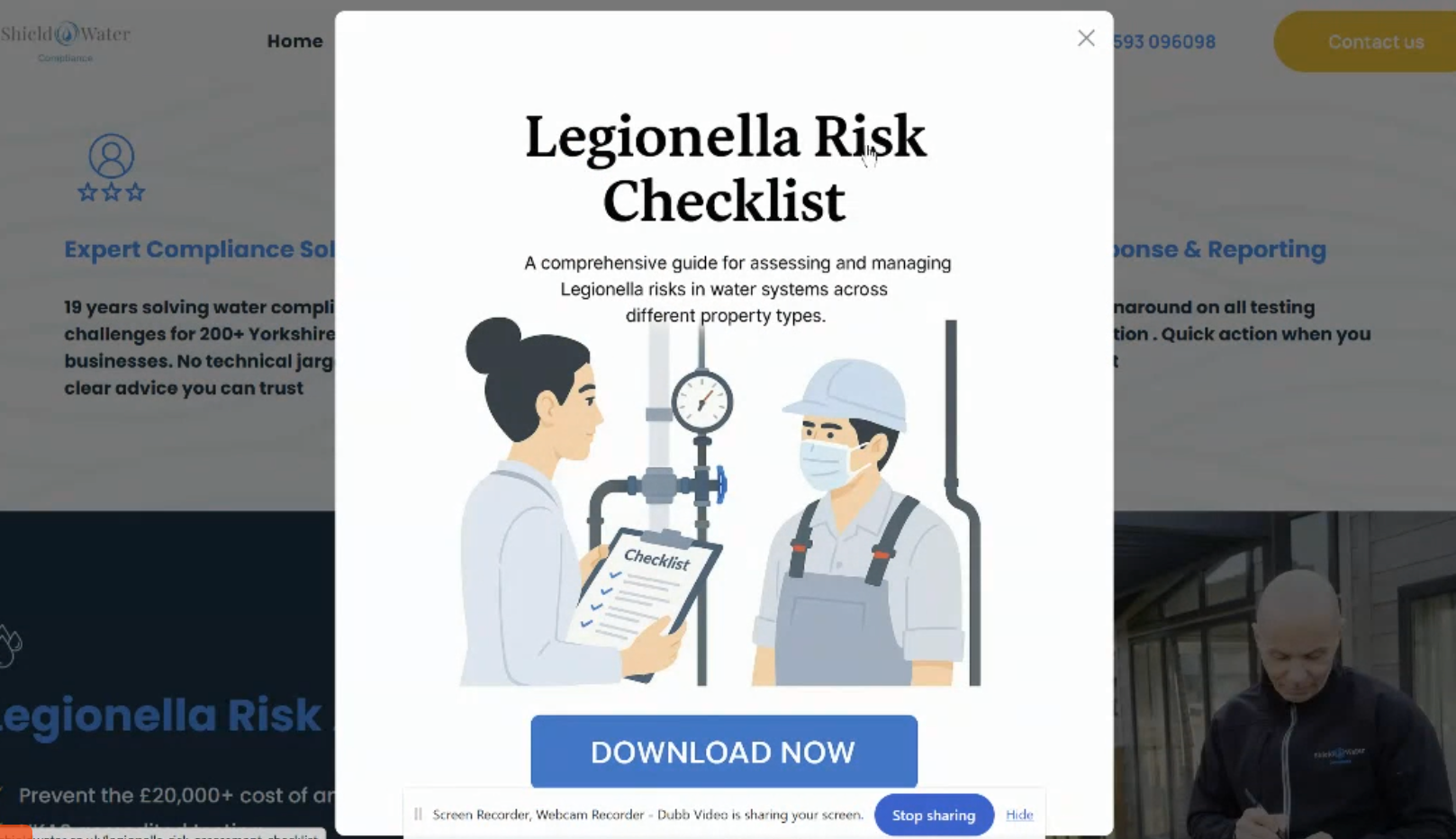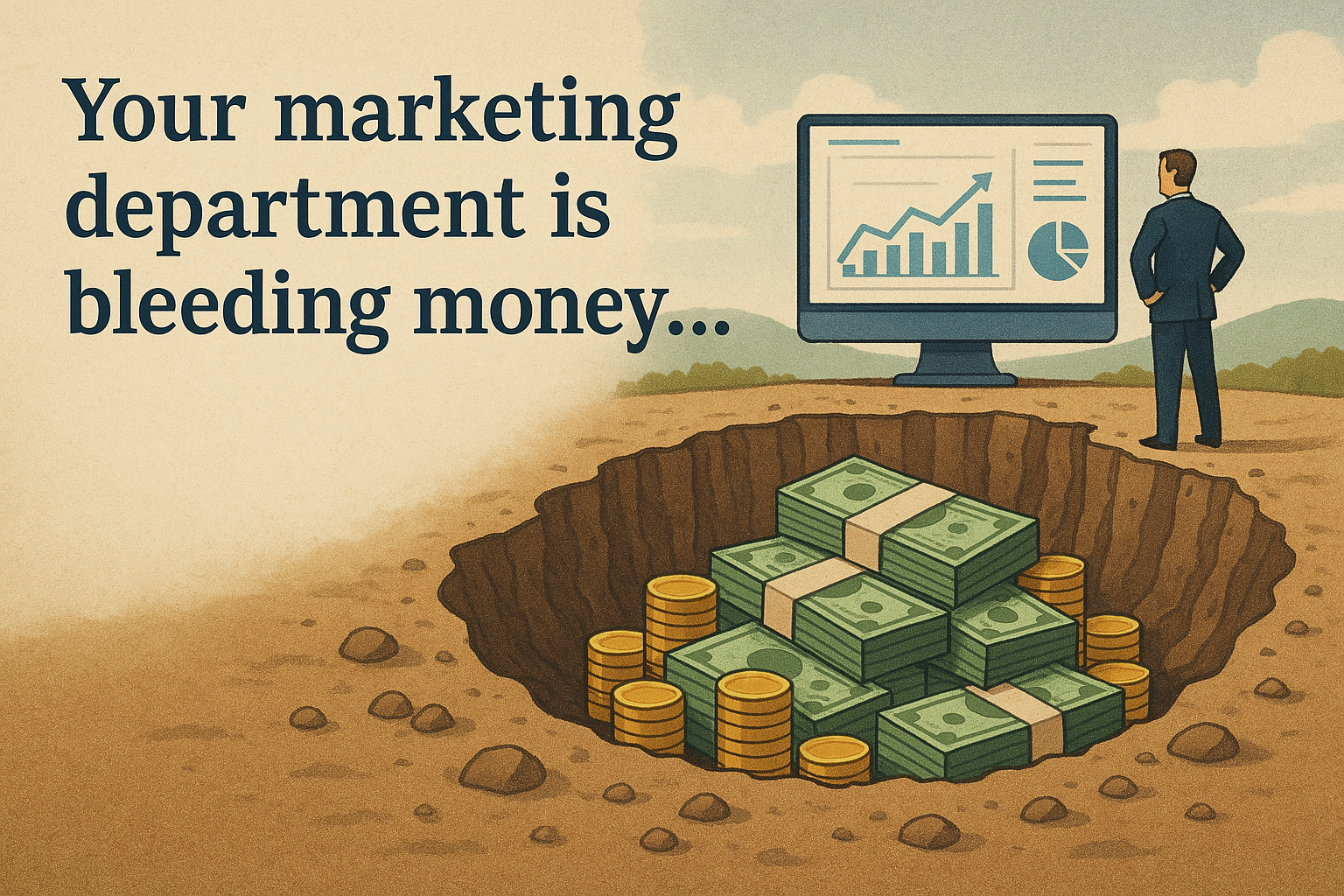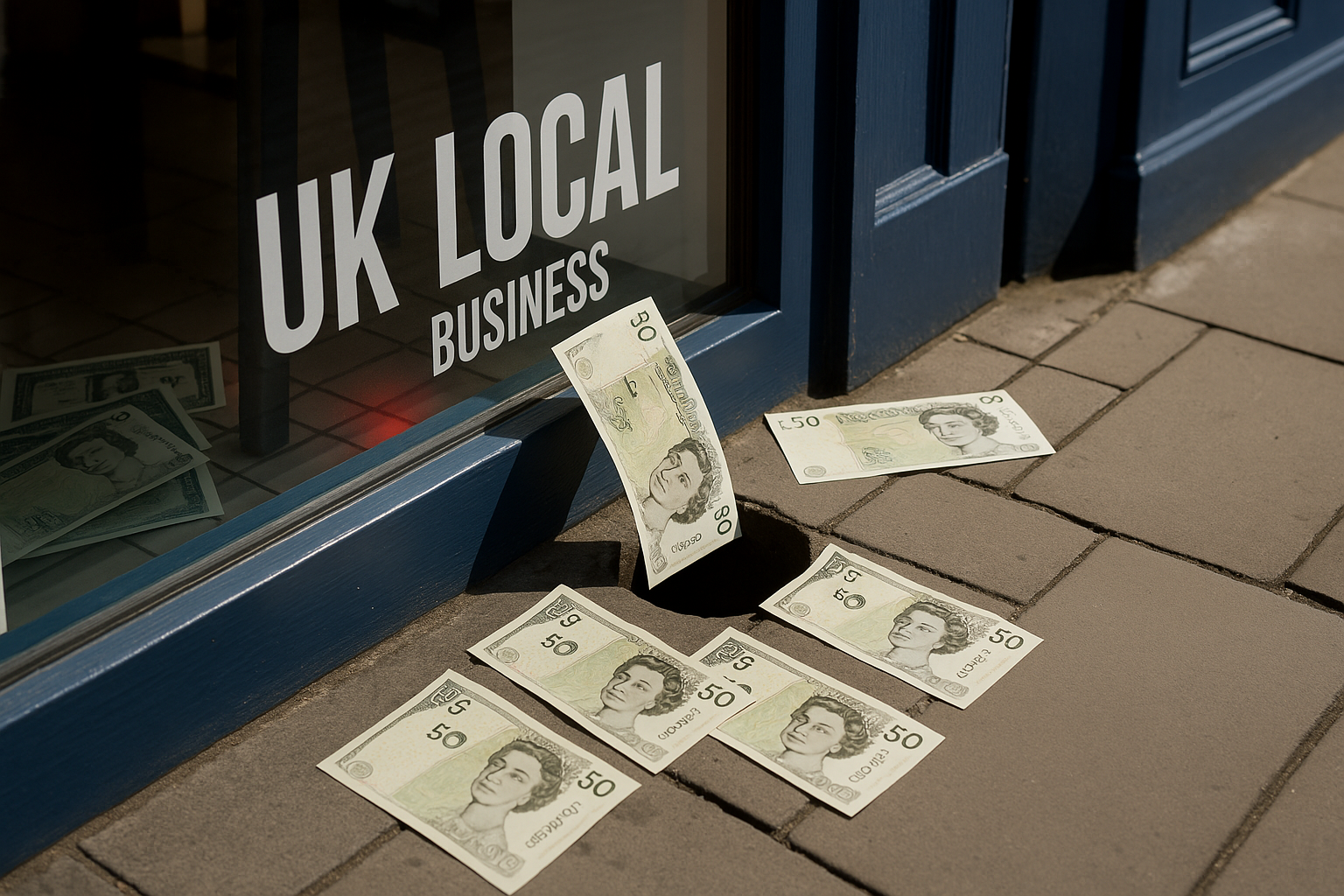Email Marketing: The Hidden Cash Machine Your Local Business Is Ignoring

Ever noticed how the businesses crushing it locally aren't the ones banging on about their latest TikTok strategy?
They're quietly building email lists. And laughing all the way to the bank.
The Brutal Truth About Your Marketing
Let's not sugarcoat this.
Your social media following? It's rented land. And the landlord keeps jacking up the rent.
According to research, organic reach on Facebook has plummeted to a pathetic 2.2% Source. That means 98% of your "followers" never see your posts.
Meanwhile, email marketing delivers a staggering £36 return for every pound spent Source.
Not a typo. 3,600% ROI.
Yet most local businesses are ignoring this goldmine sitting right under their noses.
Why?
Because it's not sexy.
It doesn't promise overnight Instagram fame.
It requires – god forbid – consistency.
"But Jon, Email Is Dead..."
Rubbish.
Email open rates for small businesses average 35.63% Source.
Compare that to your 2% social media reach.
The numbers don't lie, even if your marketing guru does.
The Shield Water Compliance System: Fresh Off The Press
I've just finished building a list-building system for Alan Holland at Shield Water Compliance in Filey.
And when I say "just" – I mean the digital ink is barely dry. We literally put it live this week.
Want to know why I'm showing you something so fresh it hasn't even had time to generate results yet?
Because I'm that confident in what it's about to do for Alan's business.
Here's what similar systems have delivered for other clients:
- Average 110+ new email subscribers in the first 30 days
- Typical conversion to booked calls: 15-20%
- Cost per lead reduction of 70-80%
The system we've built for Alan follows the exact same blueprint that's delivered these results consistently.
Behind Closed Doors: How The System Actually Works
What you're seeing isn't complicated tech wizardry.
It's three simple elements working together:
- A sticky sidebar ad that follows readers as they consume blog content
- Typically converts at 3-4%
- Visible on every blog post
- A strategically timed popup banner that appears after 40 seconds
- Usually responsible for 60%+ of all downloads
- Non-intrusive design that doesn't annoy visitors
- A value-packed downloadable resource that solves a specific problem
- "Legionella Risk Assessment Checklist"
- Designed to attract only qualified prospects
- A thank you page with a calendar booking link
- Direct path to Alan's calendar
- No friction between interest and action
Surprisingly enough, the entire system took us less than a day to build.
The Unspoken Truth About Social Media Marketing
Here's what seasoned professionals understand:
Social media platforms are designed to extract maximum cash from businesses.
They're not your partners. They're toll collectors.
In 2016, you could reach 10,000 people organically on Facebook.
In 2025, reaching the same audience costs £100's.
That's a serious increase.
Meanwhile, the cost of email marketing has remained virtually unchanged.
What most people miss is that email isn't just cheaper – it's fundamentally different:
- You OWN your email list
- You control when messages are sent
- No algorithm decides who sees your content
- No platform can change the rules overnight
The 3-Step List Building Framework That Actually Works
Building a list that generates business isn't about collecting random email addresses.
It's about creating a system that:
1. Attracts the Right People
Your lead magnet must solve a specific problem for your ideal clients.
Common mistake: Creating generic lead magnets like "10 Tips for X" that attract tyre-kickers.
Instead, create something that pre-qualifies prospects. For Alan's water compliance business, we created a "Legionella Risk Assessment Checklist" – something only serious property managers would want.
2. Engages Consistently
The critical difference lies in what happens after someone joins your list.
Most businesses either:
- Never email their list (waste)
- Only send sales messages (annoying)
The breakthrough came when we implemented a simple 4:1 ratio:
- Four value emails for every promotional one
- Each value email establishing expertise
- Each solving a small problem
This approach has generated open rates of 42% – well above industry average.
3. Converts Naturally
Where others go wrong is trying to force the sale too early.
Our data shows that subscribers who receive the 4:1 sequence are much more likely to book a call than those who receive promotional content immediately.
The missing piece of the puzzle is patience.
Why Most Local Businesses Will Ignore This Advice
Despite the clear benefits, most local businesses won't build effective email lists.
Why?
Three reasons:
- Shiny Object Syndrome: They'll chase the next marketing fad instead
- Instant Gratification: They want results yesterday
- Perceived Complexity: They think it's too technical
Their loss is your competitive advantage.
The Exact Steps to Implement This in Your Business
Want to build your own lead-generating machine? Here's your blueprint:
Step 1: Create Your Lead Magnet (Day 1-2)
- Identify your clients' biggest immediate problem
- Create a 1-page PDF that helps solve it
- Make it specific enough to attract only ideal clients
Step 2: Build Your Capture System (Day 3-4)
- Set up an email service provider (MailChimp, TryggR, etc.)
- Create a landing page for your lead magnet
- Add a popup and sidebar widget to your website
Step 3: Craft Your Email Sequence (Day 5-7)
- Welcome email (sent immediately)
- Value email #1 (sent day 2)
- Value email #2 (sent day 4)
- Value email #3 (sent day 6)
- Offer email (sent day 8)
Step 4: Drive Traffic (Ongoing)
- Share on social media
- Add to your email signature
- Mention in networking events
- Consider small ad budget (£5-10/day)
The Cost of Inaction
Let's talk about what happens if you ignore this advice.
The average local service business leaves tens of thousands of pounds in revenue on the table every year by not having an effective list-building system.
That's not counting the wasted ad spend on unqualified leads.
Or the time spent chasing prospects who aren't ready to buy.
Or the stress of feast-or-famine business cycles.
Want This Done For You?
If you're looking at this thinking "I don't have time to figure all this out" – I get it.
That's precisely why we created systems like the one I just built for Alan.
Here's my guarantee: If we build a list-building system for your business and it doesn't pay for itself within 90 days, we'll refund every penny.
No questions asked.
No small print.
But I should warn you – we only work with businesses we know we can help. And we only take on 3 new clients per month.
So if you're serious about creating a consistent flow of qualified leads, book a 15-minute assessment call here: https://www.flowemedia.com/contact
It's free, there's no obligation, and you'll walk away with at least one actionable idea – whether we work together or not.
Or keep doing what you've always done.
And getting what you've always got.
Your choice.






